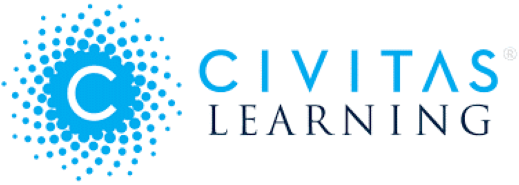Civitas Learning: Using Data to Improve Student Success

Civitas Learning has an ambitious goal of increasing the annual number of college graduates by 1 million through its application of big data analytics in higher education.
Civitas Learning has made waves in the world of higher education with its data-backed approach to student success. To date, the company has raised over $60M in funding, including prominent private equity education investors [1]. Through its work with over 400 colleges and universities, it supports more than 8M students every year [2]. Civitas’ offering includes creating a backend data infrastructure that links disparate data sources within an institution to create a platform that advisors and administrators can use to proactively identify at-risk students and intervene before they drop out or fall behind their degree paths.
The specific product use cases for an institution will vary based on the products purchased, but the service typically involves creating degree maps that students follow to earn their degrees. It then identifies key predictors of success and risk indicators throughout the student lifecycle as a way to signal to administrators or faculty that a student might need help [3]. The application of this type of data in education is broad, but as a few examples:
- A prospective nursing major who gets a C in a key gateway course like organic chemistry could be directed to tutoring
- An online faculty member with consistently lower attendance records can be directed to coaching
- An advisor with a caseload of several hundred students can identify which students are in most need of their support on a day-to-day basis
With Civitas’ broad applications comes a broad value proposition. As a mission-driven organization, it focuses primarily on the ability of its analytics to improve student graduation rates (e.g., a 46% increase in completions at Austin Community College). It also claims to support more equitable outcomes across student groups (e.g., elimination of achievement gaps by race, ethnicity, and income at Florida Atlantic University) [4]. Graduation rates in the U.S. are quite low, with only 62% of 4-year students and 33% of 2-year students receiving their degrees within 150% of expected time (see figure below). Given these low completion rates, Civitas has a big opportunity to create value through its data engine.
Figure 1: 150% U.S. graduation rates

The biggest challenge Civitas faces is the daunting implementation process faced by any prospective colleges. Big data in higher education means connecting oftentimes archaic systems that sometimes seem as if they are being held together with duct tape and a prayer. This makes each implementation unique, with anything but a turn-key solution. Conservatively, it can take 6 months to connect disparate systems across registrar, financial aid, advising, faculty, student services, etc. The implementation challenge is even more daunting when considering the alternatives that colleges have. Big data can be powerful, but granting faculty research time to create simpler models can also produce results and is much less expensive than hiring Civitas.
Finally, Civitas has the potential to run into challenges in meeting its mission even if it continues to sell its product successfully. As the saying goes: “garbage in, garbage out.” If underrepresented students are historically least likely to succeed in a degree program, it is easy to imagine a well-intentioned advisor funneling students to degree paths where they have a higher chance to “succeed,” but are left with lower value degrees that drive persistent income gaps after graduation. Civitas offers upfront and ongoing training as a way to educate its users on the appropriate ways to use its analytics. However, if training quality slips, college staff churn is high, or pressure for short term results is high, Civitas runs the risk of creating an engine that undercuts its mission of improving success without disparities.
Civitas has set its sights on the ambitious goal of improving student success through the use of big data analytics. This approach has seen its share of successes in numerous individual universities. At the same time its ability to really reach its ambitious 1 million target will depend on how well it is able to simplify implementation and onboard universities who may not have the appetite for large-scale data integrations.
Sources:
[1] “Civitas Learning | Company Profile.” Pitchbook, https://my-pitchbook-com.ezp-prod1.hul.harvard.edu/profile/54524-89/company/profile#signals.
[2] Civitas Learning, https://www.civitaslearning.com/.
[3] EdSurge https://www.edsurge.com/product-reviews/student-success-platform
[4] Civitas Learning, https://www.civitaslearning.com/outcomes/.
[5] The Condition of Education. “Undergraduate Retention and Graduation Rates.” National Center for Education Statistics, Apr. 2020, https://nces.ed.gov/programs/coe/indicator_ctr.asp.
[6] Fain, Paul. “Predicting Success.” Inside Higher Ed, 27 Mar. 2014, www.insidehighered.com/news/2014/03/27/civitas-brings-completion-oriented-big-data-community-colleges-and-universities.



Great article, I had never heard about Civitas. Dropout rates are significantly higher within the black and Latino students within the U.S., with rates of close to 10% compared to the average of 6%: https://nces.ed.gov/programs/raceindicators/indicator_RDC.asp. Do you know if Civitas is specifically targeting those communities?